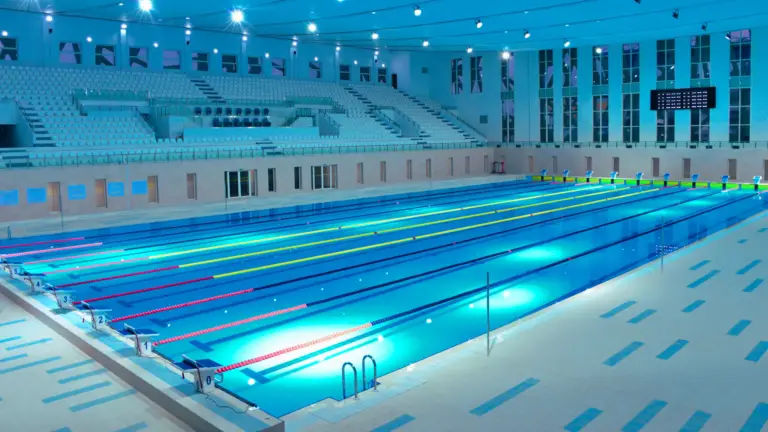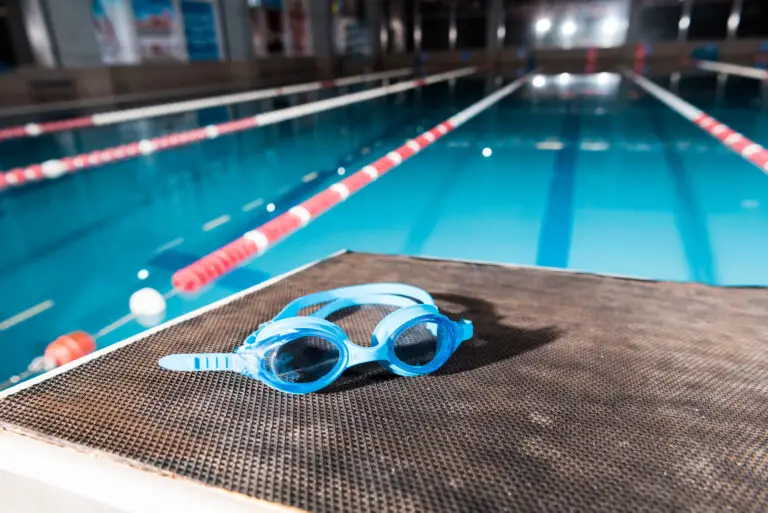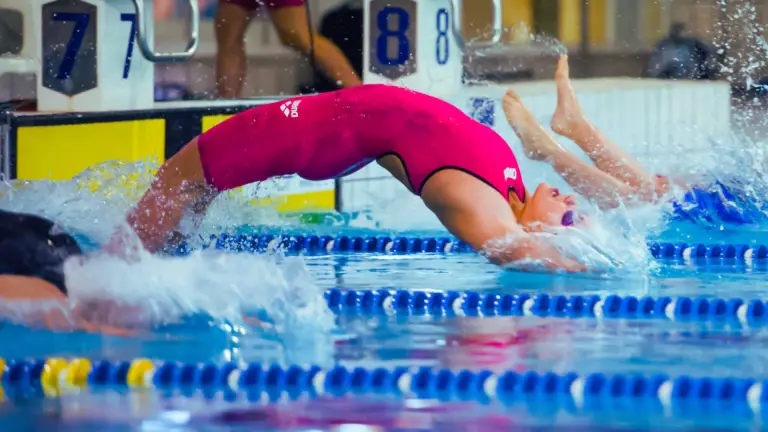Swim meets are more than just a showcase of speed and skill. They’re a symphony of swimmers, coaches, officials, and spectators, all playing their part in a harmonious blend of competition and camaraderie. But like any symphony, a swim meet requires a certain etiquette to ensure a smooth performance.
I remember my first swim meet as a young, eager swimmer. The excitement, the adrenaline, the cheering crowd – it was all so overwhelming. But what struck me the most was the unspoken code of conduct that everyone seemed to follow. It was my first introduction to the world of swim meet etiquette.
Understanding Swim Meet Etiquette
So, what exactly is swim meet etiquette? It’s a set of unspoken rules and behaviors that help maintain order and respect during a swim meet. These rules apply to everyone – swimmers, coaches, officials, and even spectators. They cover everything from respecting personal space to proper behavior on the deck and in the pool.
Why is swim meet etiquette important? For starters, it ensures a fair and enjoyable experience for everyone involved. It promotes sportsmanship, respect, and a sense of community among swimmers. But more than that, it’s a reflection of the discipline and respect inherent in the sport of swimming. As the USA Swimming Official Rules state, “The conduct of all participants…shall be in accordance with the highest standards of honesty, integrity, and sportsmanship.”
Respect for Other Swimmers and Their Belongings
One of the fundamental aspects of swim meet etiquette is respecting other swimmers and their belongings. This means not touching or using someone else’s swim gear without permission. It’s easy to mix up gear, especially when everyone’s stuff is piled together on the deck. But remember, your fellow swimmers’ gear is not communal property.
Here are a few unspoken rules about handling others’ swim gear:
- Don’t use someone else’s towel, goggles, or swim cap without asking. Even if they’re just lying around, they’re not up for grabs.
- Keep your gear in your swim bag when not in use. This helps avoid mix-ups and keeps the deck clear.
- If you find lost gear, turn it into the lost and found or a coach. Don’t just keep it or throw it away.
Respecting personal space and belongings is not just about being polite. It’s about fostering a sense of trust and respect among swimmers, which is essential for a successful swim meet. As SwimOutlet’s Guide to Swim Meets puts it, “A swim meet is a team effort, and every swimmer plays a part.”
Lane and Pool Etiquette
The pool is the heart of any swim meet, and like the heart, it needs to function smoothly for the rest of the body to work. This is where lane and pool etiquette comes into play.
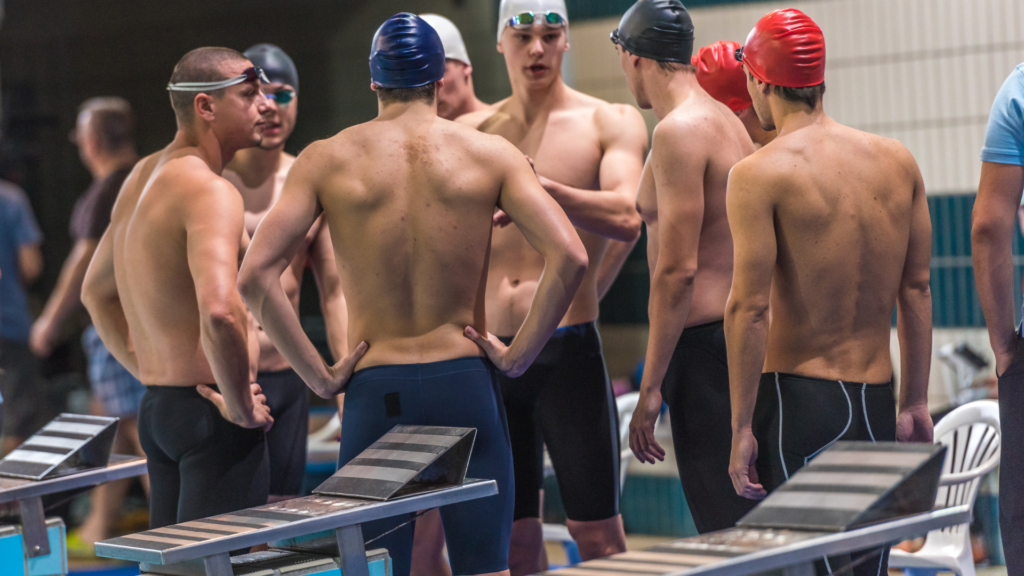
Each lane in the pool is designated for a specific purpose during a swim meet. Some lanes are for warming up, some for cooling down, and others for actual races. It’s crucial to use the correct lane for its intended purpose. For instance, don’t use a warm-up lane for a full-speed practice sprint.
Warming up and synchronizing in the pool also have their own set of unspoken rules. According to Swimming World Magazine’s Article on Warming Up, these include:
- Don’t jump on top of other swimmers. Always check if the coast is clear before you dive in.
- Keep to your side of the lane. This helps avoid collisions and ensures everyone has enough space.
- Don’t stop in the middle of the lane. If you need to stop, move to the side or the end of the lane.
Deck Etiquette
The deck is more than just a place to dry off and catch your breath. It’s a hub of activity, and it requires its own set of etiquette rules.
First and foremost, don’t block deck space. This includes not leaving your gear scattered around and not standing in areas where you might obstruct others. Remember, the deck is a shared space, and everyone needs room to move around.
Proper behavior on the deck also involves being mindful of your noise level. Yes, swim meets are exciting, but excessive noise can be distracting for swimmers and disrespectful to officials and other spectators.
Sportsmanship and Teammate Relations
Sportsmanship is the soul of any sport, and swimming is no exception. A swim meet is not just about winning races; it’s about showing respect for your competitors, your teammates, and the sport itself.
This means congratulating others on their performance, whether they won or lost. It means accepting your results with grace, whether you’re thrilled with your time or disappointed. And it means supporting your teammates, cheering them on, and helping them when they need it.
Interacting with teammates and other swimmers is also a crucial part of swim meet etiquette. Remember, you’re all in this together. So, be supportive, be respectful, and most importantly, be a good sport. As the saying goes,
“A good swimmer knows how to swim, but a great swimmer knows how to be part of a team.”
The Role of Officials and Volunteers
Swim meets wouldn’t be possible without the hard work of officials and volunteers. They ensure the meet runs smoothly and fairly, and they deserve our utmost respect.
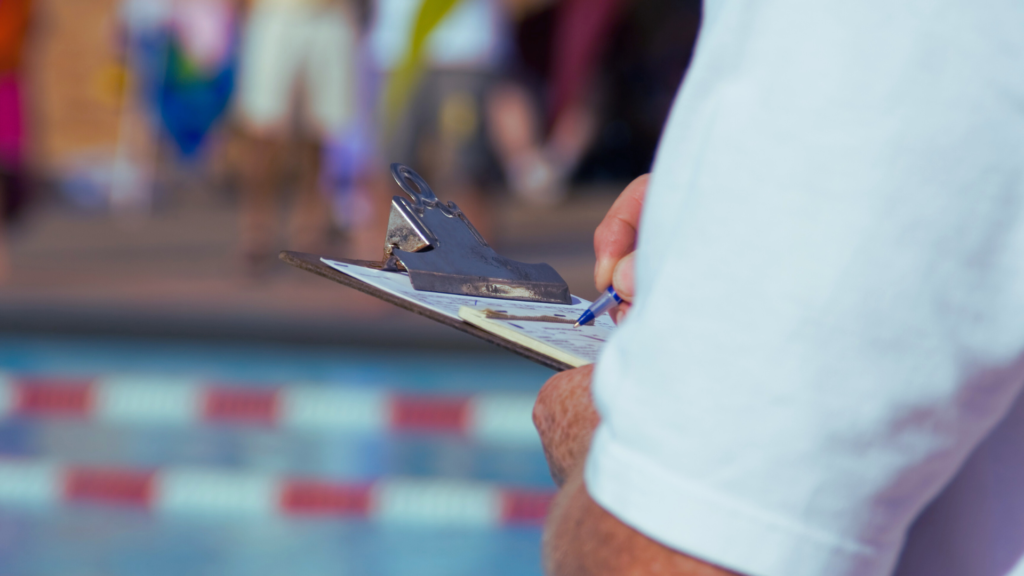
Officials are responsible for enforcing the rules and maintaining meet etiquette. They make sure swimmers follow the proper procedures, from warming up to racing. Respecting their decisions is a fundamental part of swim meet etiquette.
Volunteers, on the other hand, handle a variety of tasks, from timing races to organizing events. They give their time and effort to make the meet a success, and they deserve our appreciation and respect.
FAQ
Swim meets can be confusing, especially for newcomers. Here are some common questions and their answers:
Conclusion
Swim meet etiquette is more than just a set of rules. It’s a reflection of the respect and sportsmanship inherent in the sport of swimming. It ensures a fair and enjoyable experience for everyone involved, from swimmers and coaches to officials and spectators.
So, whether you’re a seasoned swimmer or a newbie, remember to practice good swim meet etiquette. After all, a good swimmer knows how to swim, but a great swimmer knows how to respect the pool, the people, and the sport.


